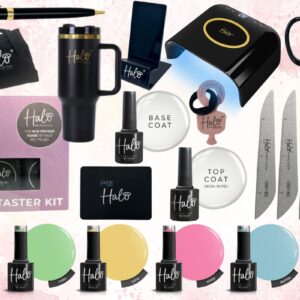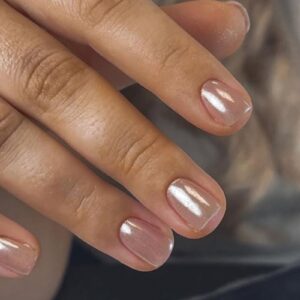
Are you holding your nail file correctly? Find out here…
By Katie Barnes | 04 May 2021 | Expert Advice, Feature

Although filing the natural nail shape may seem like it’s as simple as using a back-and-forth motion, the truth is there’s much more to it. The way in which you hold your nail file when filing the natural nail or enhancements is critical for the desired results and shape.
Start by holding the file flat perpendicular against the nail tip and using a finger or thumb to support the nail file and keep this in position. You must support like this for every free edge shape which you create. If this deviates due to not being supported, then the free edge shape will not be symmetrical on both sides.

Filing a square nail
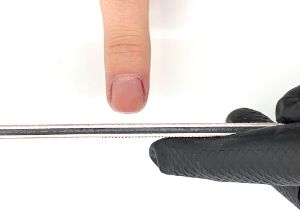
Square filing results
Hold your nail file at a 90-degree angle for a true square enhancement (which does not have rounded corners). If you wish to have more rounded edges such as a squoval shape, your nail file will need to be angled between a 90 and 45-degrees which the upper edge of the file tilting towards yourself and the lower edge tucking underneath the nail.
The more this is angled underneath, the more rounded the edges of the nail will be and the more dramatic the shape.

Filing rounded edges

Rounded filing results
When filing extreme shapes, these angles are even more dramatic but the same rules apply. Look at the shape of a Russian Almond, which has a pronounced angled free edge, this must be held at a 45-degree angle to achieve these results.
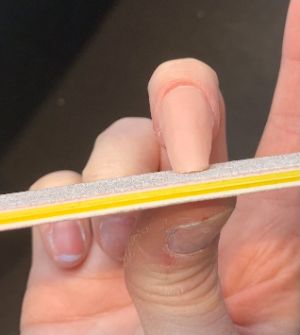
Russian Almond filing

Russian Almond free edge
Have you ever experienced the corner points appearing more prominent than the centre as if the free edge shape is dipping in at the centre? This is due to the angle in which your nail file is held. If the file is angled towards the nail with the lower part of the nail file tilting towards you, then the centre part of the nail will become over-filed, resulting in this look.

Incorrect filing

Incorrect filing results
Be careful when filing a short nail, including toenails – particularly when creating an angled shaped where you file tucks underneath the nail. You need to avoid the lower edge of the nail file resting on the skin as this could catch and nick the customer, even with a file which has had the edge bevelled.
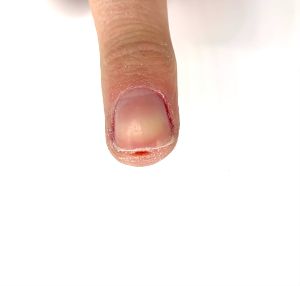
Cut skin
To do this, move the way in which the nail file rests against the nail upwards. Work slowly and steadily and keep checking the nail and skin after each stroke of the file.

Filing rounded edges
To maintain the integrity and structure of the natural nail, you should avoid the habit of filing down the side walls to give a slimming effect. This will make the natural nail and any subsequent enhancement weaker and more prone to breakage. Choosing a flattering and slimming nail shape, colour and effect will help combat this concern.
Love Katie B x

Read the latest issue




